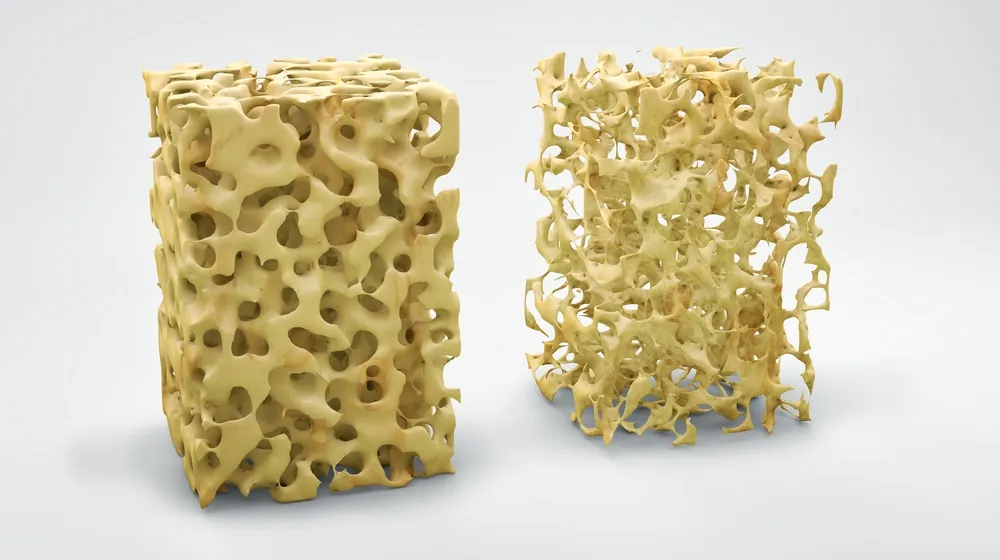Osteoporosis is a crippling condition provoked by an imbalance between the creation of new bone tissue and the destruction of the old, which becomes worse as we age.
What causes osteoporosis to develop and progress?
Osteoporosis is the failure of tissue maintenance in the bones, causing them to become weak and fragile. This increases the risk of falls and drives age-related frailty. The National Osteoporosis Foundation estimates that low bone mass due to osteoporosis is a threat to public health for nearly 44 million men and women aged 50 and older in the United States. During the progression of osteoporosis, the balance between the destruction of old bone tissue and the creation of new bone tissue gets disrupted. The bone structure is maintained by osteoclasts, the cells that break down bone tissue, and osteoblasts, which create new bone tissue. Bone tissue is in a state of balance between removal and renewal, but as we age, this balance shifts in favor of osteoclasts and the removal of bone tissue. So, why does this happen? Senescent cells are known for causing inflammation via a cocktail of proinflammatory signals known as SASP, so they are thought to be one of the causes of osteoporosis.A new stem cell review
We have talked about how recent progress has been made in treating this disease by removing senescent cells in mice. In this new review, the authors take a look at delivering stem cells to the bone tissue to try to address the imbalance[1].
The idea of increasing the numbers of bone-building stem cells and replacing those lost with age is a plausible approach.
However, this approach is far from complete, as it only addresses one aspect of osteoporosis that causes bones to weaken. Replacing lost stem cells alone is unlikely to solve the problem, as the underlying causes, such as senescent cell accumulation and resulting inflammation, are not being addressed.
Conclusion
As the authors here mention, there are many current stem cell trials, in which researchers are investigating other diseases, that may influence the progression of osteoporosis. This gives us the chance to learn a great deal about stem cell therapies for osteoporosis with some additional effort. It is plausible that the combination of senescent cell removal therapies and stem cell therapy could be a potent force in treating osteoporosis.
Literature
[1] Kiernan, J., Davies, J. E., & Stanford, W. L. (2017). Concise Review: Musculoskeletal Stem Cells to Treat Age‐Related Osteoporosis. Stem cells translational medicine.



